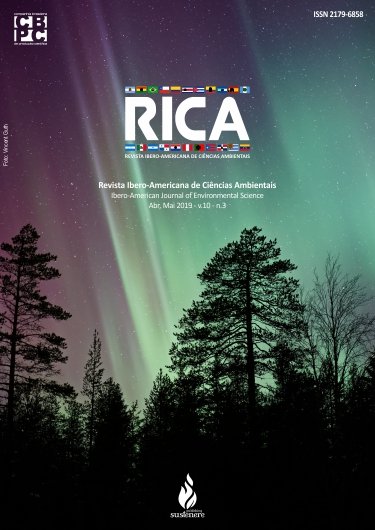Floristic composition of a lowland forest under the influence of macrodrainage in Belém, Pará
DOI:
https://doi.org/10.6008/CBPC2179-6858.2019.003.0002Keywords:
Macrodrainage, Floodplain, Floristics, PhytosociologyAbstract
Studies have shown that the tendency of urban occupation in large cities is to consume increasing amounts of green areas, which has been causing serious damage to the natural environment and the health of populations. In order to evaluate the negative impacts on the floristic composition, an inventory of the region's floristic species was carried out. The study area has 44.06ha and is inserted in the Ecological Park of the Municipality of Belém. In the elaboration of the vegetation map, orthophotos were analyzed in the aero-survey of the city of Belém and cartographic bases of the IBGE and the topographic survey were used, dividing the area in three distinct regions. In the internal areas of the Park, a strong floristic identity was observed between the fragments, translated in the values of dominance, abundance and frequency of the species. In the Area A1 , the values of dominance and abundance were 29.51 m2/ha and 1,783 ind./ha, A2, 30.01 m2/ha and 1,723 ind./ha and A3 ), 31.18 m2/ha and 841 ind./ha, respectively. The main parameters evaluated by the phytosociological analyzes point to a rich and diverse environment when compared to other floristic communities, indicating that this is a mature community with the different stages of forests in the Amazon. The high degree of homogeneity between the plots indicates that it is the same floristic environment, suggesting that the qualitative losses due to deforestation in the area of the macrodrainage should not cause changes in the floristic diversity of the Park.
Downloads
Downloads
Published
Issue
Section
License
The CBPC - Companhia Brasileira de Produção Científica (Brazil CNPJ: 11.221.422/0001-03) the material rights of the published works. The rights relate to the publication of the work anywhere in the world, including rights to renewals, expansions and dissemination of the contribution, as well as other subsidiary rights. All electronically published works may subsequently be published in printed collections under the coordination of this company and / or its partners. The authors preserve the copyright, but are not allowed to publish the contribution in another medium, printed or digital, in Portuguese or in translation.









